For voluminous light purple blooms that cultivate an air of romance in your garden, you can plant lilacs. As perennials, they will reward you with fragrant flowers every year.
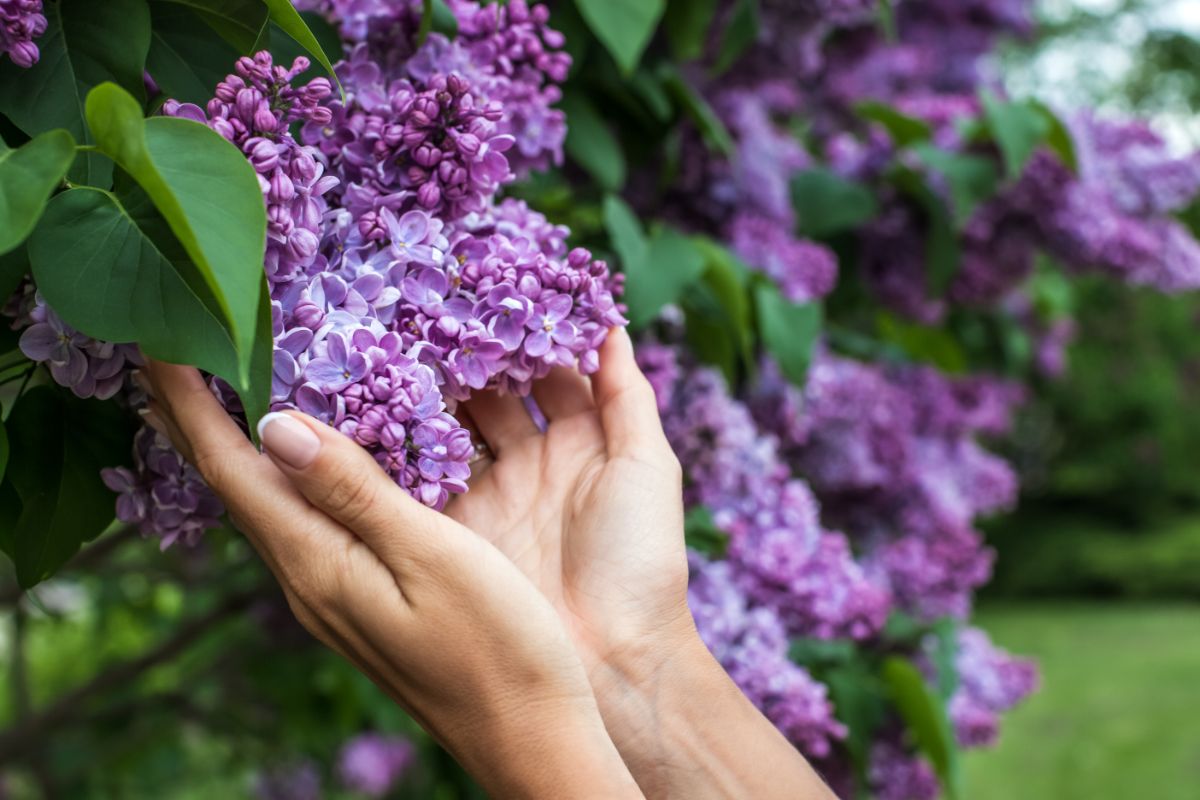
This guide will teach you how you can grow and maintain lilacs. If you are looking for info or instructions for a specific aspect of lilac care, you can jump to what you need in the advanced jump below.
Jump to:
- What Are Lilacs?
- Lilac Basics
- Where Do Lilacs Grow?
- Why Grow Lilacs?
- When Do Lilacs Bloom?
- How Long Do Lilacs Bloom?
- When to Plant Lilacs
- Ideal Growing Conditions for Lilacs
- How to Plant Lilacs
- How to Propagate Lilacs
- How to Care for Lilacs
- Recommended Planting Combinations for Lilac
- Lilac Landscaping Ideas
- Recommended Lilac Varieties
- Frequently Asked Questions About Growing Lilacs
- Where to Buy Lilacs
What Are Lilacs?
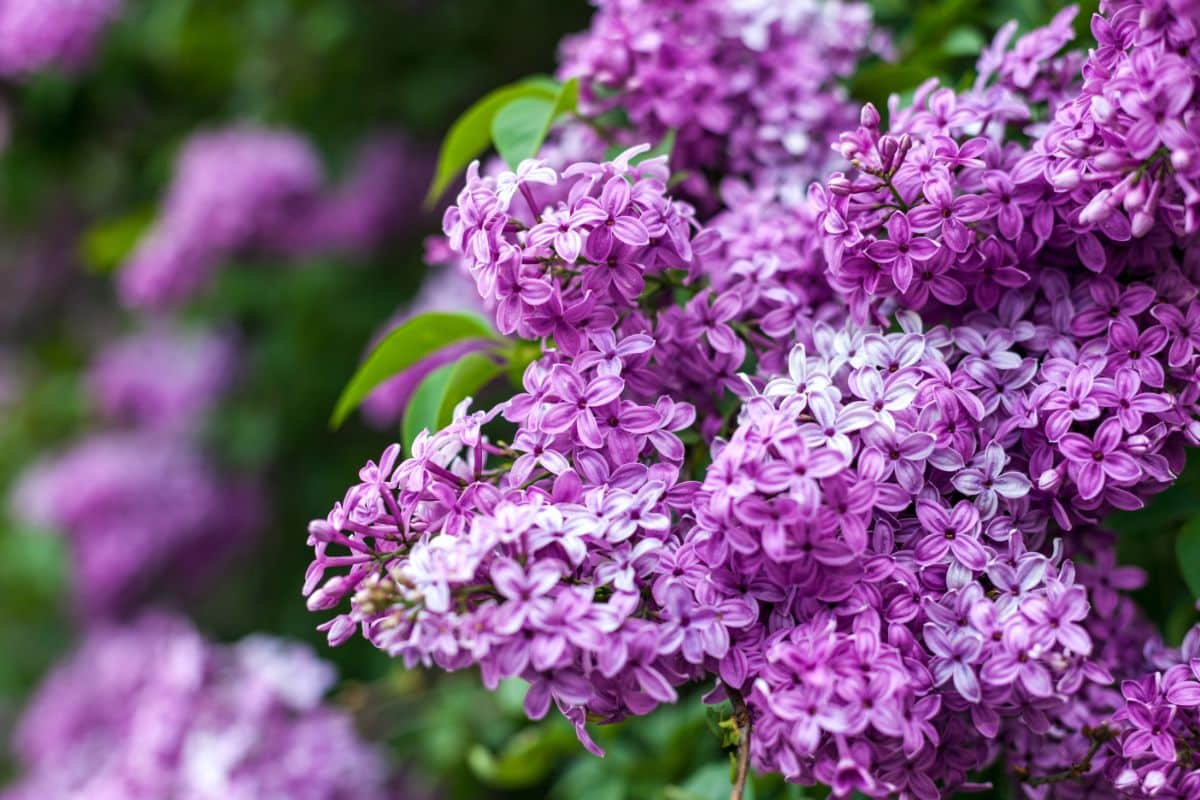
Lilacs are plants that belong to the genus Syringa, which is part of the family Oleaceae, the olive family. The genus only contains about a dozen species. Sometimes, people refer to plants in this genus as “common lilac.” This helps to differentiate it from plants in some other genera, also sometimes called “lilac.”
Lilacs grow as shrubs. We have seen some people say they also grow as trees, while others contest that structurally, these “trees” are still simply tree-shaped shrubs.
The fragrant flowers of lilacs are usually a light pinkish-purple color. We also refer to this color as “lilac.” The hue is similar to lavender, but lavender is cooler in tone, while lilac is warmer.
It may surprise you to learn that not all lilac blooms are purple. You can also find lilacs that produce white flowers, pink flowers, yellow flowers, or burgundy flowers. There are cultivars with single or double blooms.
In fact, there are quite a few types of hybrid lilacs now as well, providing you with even more variety to choose from.
Lilac Basics
| Zones: | 2-7 |
| Blooming season: | Spring and summer |
| Expected height: | 4-15 feet (depending on type) |
| Soil: | Rich, well-draining |
| Sun: | Full sun |
Where Do Lilacs Grow?

Lilacs are native to eastern Asia and the southeastern part of Europe. They are cultivated in zones 2-7 around the world and can now be found in many countries on these and other continents.
Why Grow Lilacs?
● Voluminous blooms make lilacs a visually spectacular addition to your landscape.
● Birds, butterflies, and bees may all take a greater interest in your garden when you invite them with lilacs.
● Lilacs are a great choice for containers as well as your flower beds, maximizing your flexibility for where you put them.
● The fragrance of lilacs is a favorite among many gardeners, who appreciate that it is easy to detect but not overwhelming.
● Increase privacy by planting one of the larger types of lilacs in your yard.
● For a dramatic flower arrangement, try cutting some lilacs. They can easily fill out large gaps and make a statement.
● The spectrum of lilac colors will surprise you. Even though the classic lilac has purple blooms, there are many other options out there that are sure to delight your household and your neighbors and visitors.
When Do Lilacs Bloom?
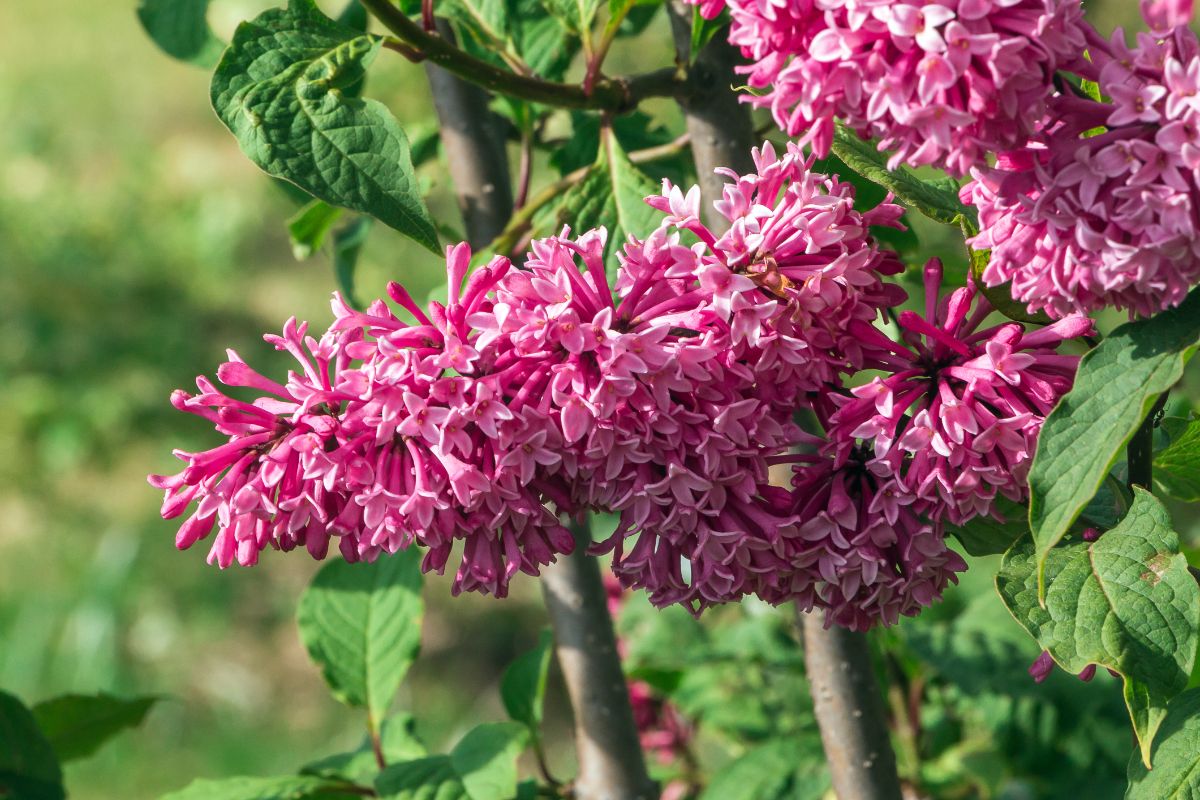
The bloom time for lilacs can be in spring or summer, depending on the cultivar.
How Long Do Lilacs Bloom?
Each individual lilac plant in your garden will bloom for just two weeks or so each year. The vast majority do not produce a second flush of blooms.
The key to enjoying your lilacs for longer is to plant multiple cultivars. Pick some that bloom early, others that bloom in the middle of the season, and others that bloom later. That way, as the blooms begin to fade on one of your lilacs, they will start appearing on some of your others.
When to Plant Lilacs
The best time of year for planting lilacs is in the fall. But you can also plant them in spring.
Ideal Growing Conditions for Lilacs
Let’s go over the sun, soil, and water requirements that lilac plants need to reward you with a bounty of blooms every year.
How Much Sun Do Lilacs Need?
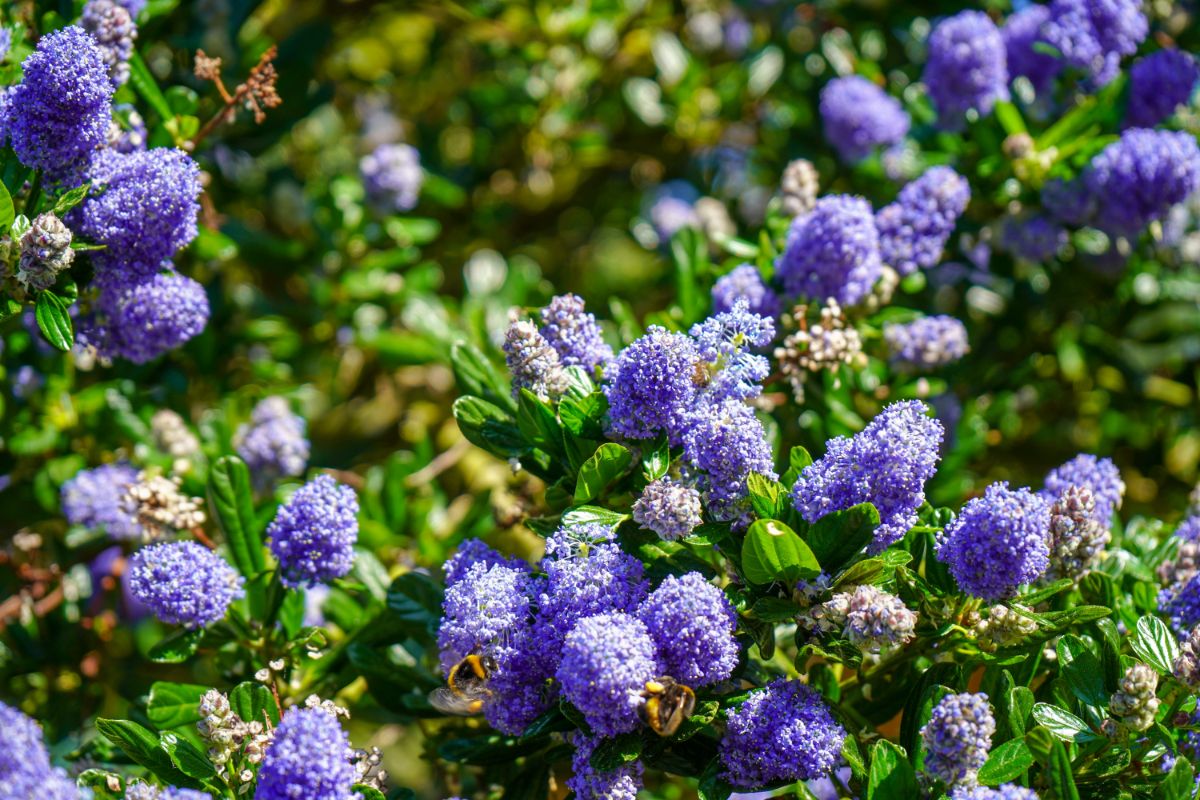
Lilacs generally grow best in full direct sunlight. They need at least 6-8 hours of sunlight per day in order to produce the most magnificent displays of blooms.
Even partial shade can reduce the amount of flowering. That said, you can get away with it if you have the right type of lilac.
Portland Nursery suggests that you consider Syringa laciniata, or “cut leaf lilac,” in this scenario. The nursery says, “It is perhaps the only lilac that can bloom reliably in partial shade, and it can stand up to hot, humid conditions too. Add resistance to powdery mildew, and you have the perfect lilac.”
What Type of Soil is Right for Lilacs?
Moist, well-drained soil is key for getting lilacs to grow. Along with keeping the soil moist, make sure it is on the rich side. Amend it with plenty of compost if it is poor to average.
One area where there seems to be some confusion with lilacs and soil is with respect to pH.
We see resource after resource saying that lilacs need alkaline soil between 6.0 or 6.5 and 7.0.
To be clear, on the pH scale, 7 is neutral. Values that are higher than 7 are alkaline, and values that are lower than 7 are acidic.
Clearly, something is wrong with the common statement about alkaline soil and a pH between 6.0 and 7.0.
Montana State University Extension says, “Neutral soil is ideal, but lilacs will tolerate soil with a pH of 6.5 to 8.5 if it is well-drained. Soil type sometimes alters flower colors, so arboretum specimens may not look the same in your garden.”
After researching around, we are going to guess that this is the most accurate description of what lilacs really need.
In other words, they prefer a pH that is neutral to alkaline but can tolerate slightly acidic conditions as well.
How Much Water Do Lilacs Need?
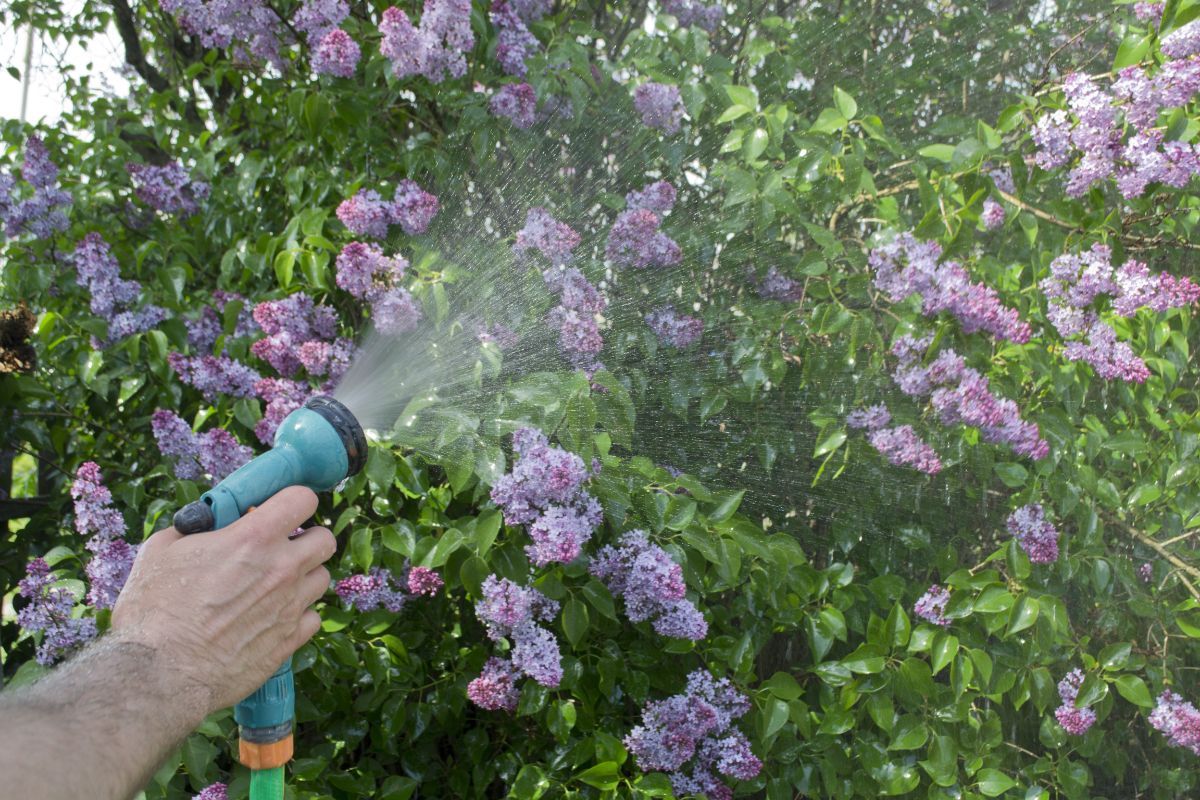
For how much regular watering these fragrant blooms need, we can also turn to Montana State University Extension.
According to this resource, about an inch of water weekly is required during June and July. When August begins, you can start watering less unless you just transplanted your lilac. Once your lilacs enter dormancy in late autumn, you should do a deep watering.
How to Plant Lilacs
While many people grow lilacs directly in their flower beds, you can get away with planting them in your container garden as well. First, we will tell you how to plant them in the ground step-by-step. Then, we will do the same for planting potted lilacs.
Ground Planting
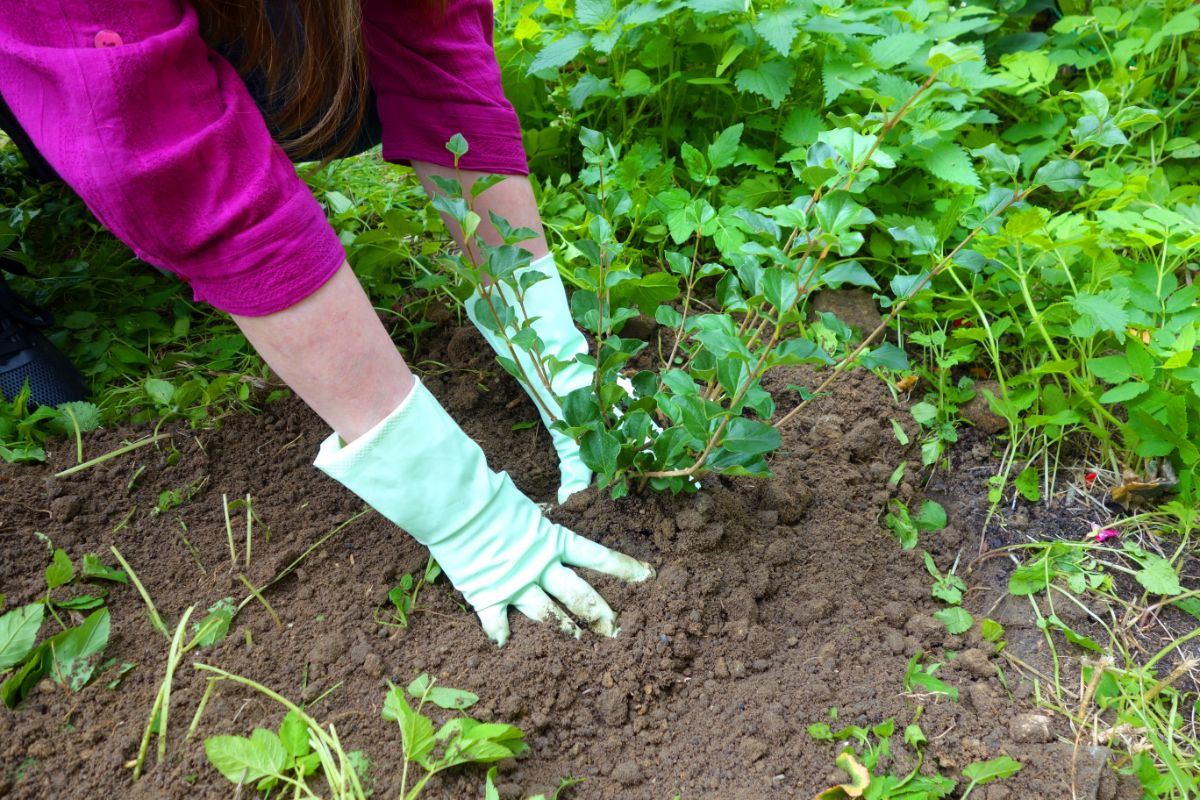
1. After you select a sunny spot in your garden for your lilacs, amend the soil with organic materials. Some good options include compost, worm castings, or manure. This will make the soil more nutritious and also improve its drainage.
2. Dig holes for your lilacs, spacing them 5-15’ apart. With compact varieties, you do not need a ton of space between plants, but with larger varieties, you certainly do.
3. If there is a burlap around the base of your lilac plants, remove it and discard it (this goes for other materials as well, like rope).
If the roots have been tightly bound in small nursery containers, you may need to gently spread them out.
4. Plant the lilacs in the holes, and backfill the soil.
5. Water well.
Be aware that if you start out with a lilac sucker, it will take 4-5 years to start producing blooms (this is also common with nursery plant lilacs).
The lilac should produce foliage every year, though, which will at least tell you that it is alive and well. You will just need to be patient while you wait for it to get to the flowering stage.
Container Planting
1. Choose a large container for your lilac plant, at least 24” in diameter, with a depth of at least 12”. The pot needs to have drainage holes.
2. Begin filling your container with a suitable potting mix. You may want to amend it with compost.
3. Carefully remove the lilac from its nursery container and spread out the roots gently.
4. Set the lilac inside the container.
5. Fill the rest of the soil in around the lilac and water well.
6. Pick a spot where your lilac container will get plenty of sunlight.
Your potted lilacs will probably need more water than the lilacs you plant in the ground; this is simply what happens with containers. They dry out fast.
Additionally, your lilac may need to be re-potted eventually if it starts to outgrow the container you chose.
How to Propagate Lilacs
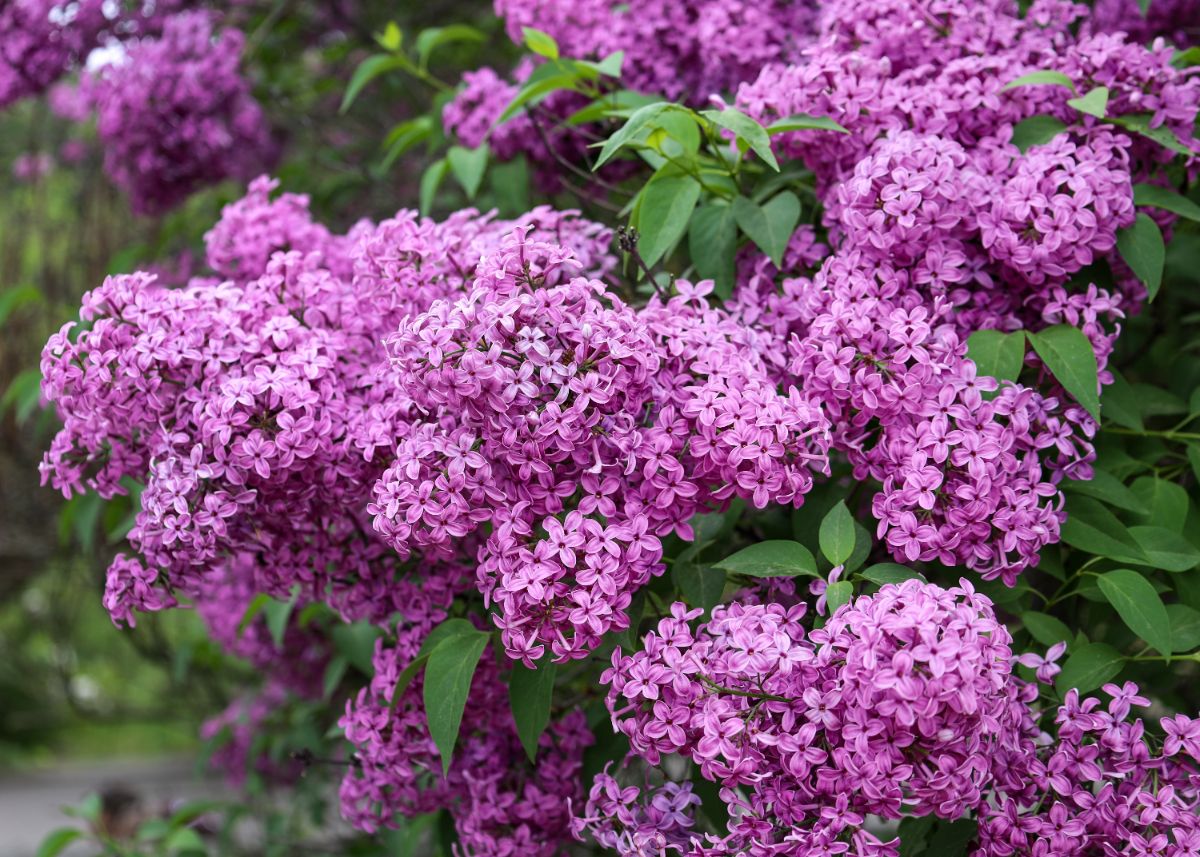
There are several different methods you can use to propagate lilacs: growing them from seeds, starting them from cuttings, or splitting them. You can find instructions for all of them below.
Starting Lilacs from Seed
1. In late summer or early autumn, the seed pods should be ready for you to harvest. If they are not fully dry, you can either leave them on the plant a little longer or let them dry indoors for a bit. Then, you can take the seeds out.
2. Store the seeds in a cool, dry place.
3. When you are ready to try starting the seeds, you will need to begin the process by stratifying them. That means storing them in plastic bags in your fridge along with a little damp vermiculite (note that it should not be wet).
The stratification process can take anywhere from 40 to 60 days, so plan accordingly.
4. Get seed starter trays with drainage holes. Fill them with a seed starting mix.
5. Sow the seeds on top of the seed starting mix.
6. Cover the seeds with a thin layer of seed starting mix or vermiculite.
7. Use a spray bottle to moisten the seed starting mix, taking care that you do not dislodge the seeds.
8. To speed up the germination process, put a hat mat underneath your trays. Use grow lights for 14 hours a day. The germination time should be anywhere from a week to a month in most cases.
9. Monitor your seeds, and keep spraying the potting mix when it needs it.
10. As the seedlings get larger, you can transfer them to bigger containers.
11. Eventually, the seedlings will be ready to plant outdoors. Harden them off before taking them outdoors permanently.
To harden the young lilacs, take them outdoors for progressively longer periods of time to get them used to conditions outside.
12. Transplant the seedlings in their permanent homes and water well.
Starting Lilacs from Cuttings

Like many other perennials, lilacs can be propagated from their cuttings. The steps are similar to what you may have used to propagate other plants in your garden.
1. In spring or early during summer, head outside to your lilac plant in the morning. Trim off 4-6” of fresh growth, cutting just below a node.
2. Remove the lower leaves and keep the top leaves.
3. Get a container with drainage holes and fill it with potting mix. Use a spray bottle to moisten the potting mix.
4. Using a chopstick or the end of another utensil, make some small holes in the potting mix.
5. Dip the cuttings in rooting hormone.
6. Gently insert the cuttings into the potting mix.
7. Gently tamp down the potting mix around each cutting to keep it upright.
8. Put a cover of some sort on top of the container to lock in moisture. Be sure that it does not touch the cuttings.
If you are concerned about rot, you can skip the cover, but you will just need to water the cuttings more often since the potting mix will dry out faster.
9. Put the cuttings somewhere warm.
10. Regularly check the moisture level of the potting mix as your cuttings are rooting. Add more water when needed.
11. Eventually, the cuttings will develop roots and start growing more vigorously. Once they are ready to transplant, you can harden them.
12. Transplant the cuttings into their permanent homes and water well.
How to Split Lilacs
Here are the steps to splitting lilacs:
1. Identify suitable branches to split from the original lilac. They should be on the smaller side.
2. Normally, we dig up perennials to divide them, but that is not what we are going to do with your lilac.
Instead, mentally mark off where you want to make the division. Along with the branches you picked, it should include about 4-6” of root ball.
Then, push the shovel down into the plant at that point. Keep pushing all the way down until you have divided the roots.
3. After you have severed the roots, push underneath the part of the plant you split off, then pry upward so you can remove it from the ground.
4. Dig a hole that will be large enough to accommodate the newly-divided lilac plant.
5. Place the lilac in the hole and backfill the soil. Make sure you do not make the mistake of burying the root ball too deeply.
6. Water well.
7. Don’t forget to return to the original plant and backfill the soil there, too, since you were digging down into the ground beside it. You should not leave the root ball exposed.
How to Care for Lilacs
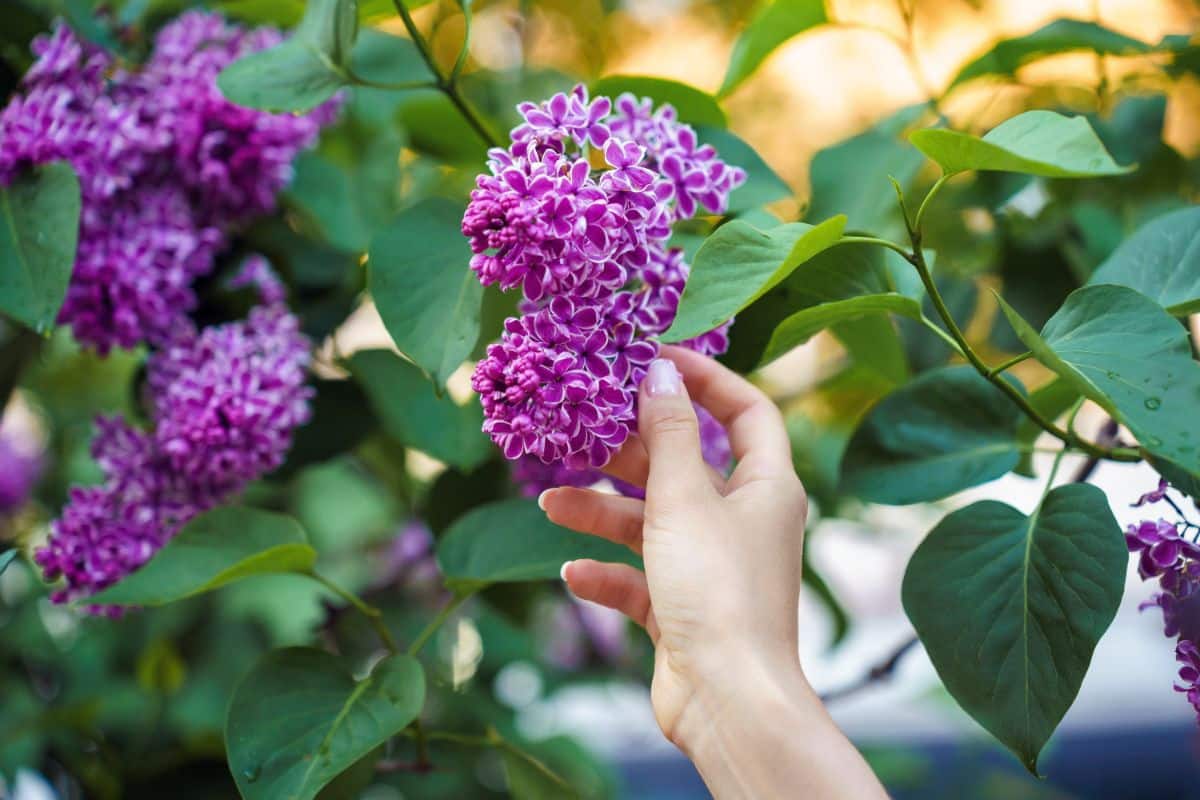
Let’s go over what your lilac bush will need from you in terms of fertilizing, mulching, staking, and pruning.
How to Fertilize Lilacs
Cornell University Cooperative Extension Monroe County writes that whether you need to fertilize lilacs at all depends on the richness of your soil. The best times to fertilize are March and April, and formulas like 5-10-5 or 10-6-4 are good choices.
The extension warns, “Never fertilize lilacs between July 1st and Thanksgiving. Fertilizing at this time may encourage a flush of late season growth subject to winter injury, and retard the normal onset of dormancy in the fall, greatly increasing the risk of winter injury.”
How to Mulch Lilacs

To help keep weeds away from your lilacs and maintain the moisture in the soil, you might want to add a layer of mulch. Some materials that can work well include bark, wood chips, peat moss, or sawdust.
How to Stake Lilacs
Young lilac plants may be more vulnerable to harsh winds or rains than more established lilacs. Staking them temporarily while they are growing may be helpful.
What about older lilacs? These tend to be pretty sturdy and support themselves well. If yours are leaning, pay attention to the angle. There is a good chance it is toward the sun. The issue is not that they need support, just that you did not account for this when planting them. Some creative pruning may help them to look more “upright.”
How to Prune Lilacs
After your lilac blooms, you can prune it. Get rid of dead branches, diseased matter, growth that is conflicting, wilted blooms (see below), and unwanted suckers.
How to Deadhead Lilacs
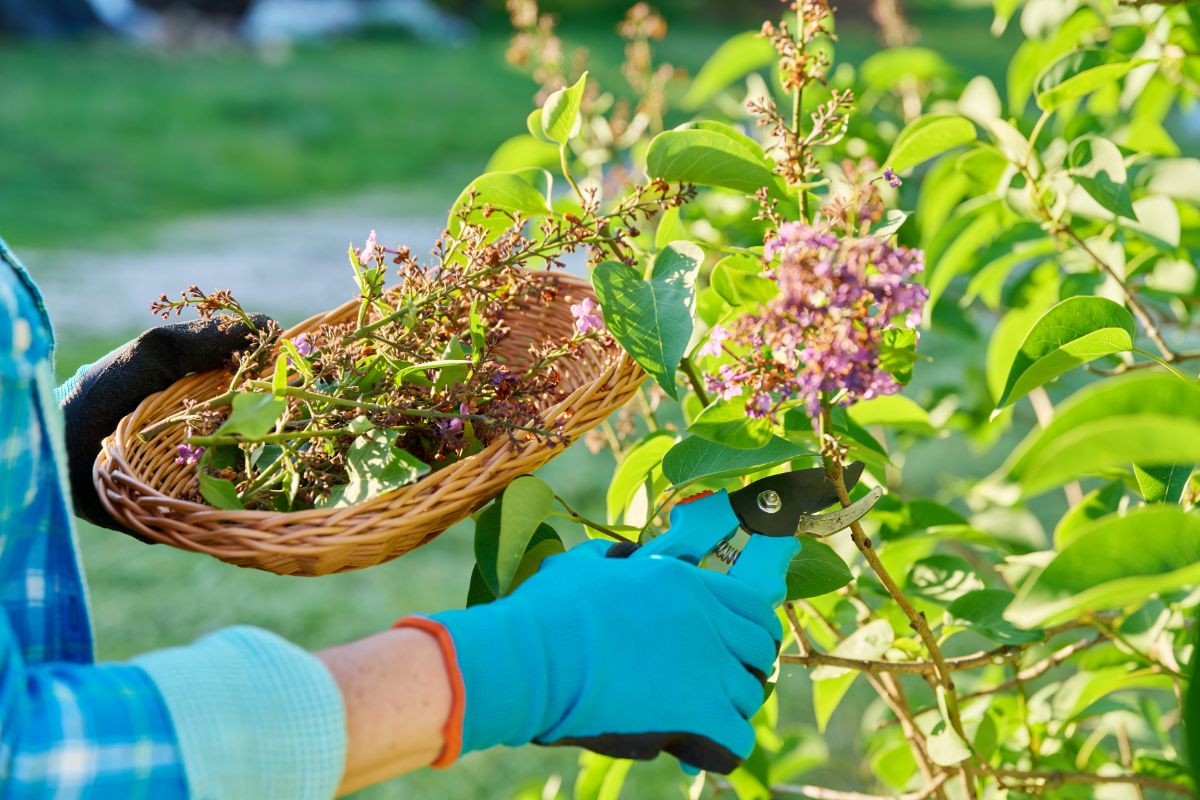
Like many other perennials, lilacs can be deadheaded. This simply refers to getting rid of the dead blooms.
Will your lilac bloom again if you do this? No, it won’t unless it is a repeat blooming variety. But you will prevent it from going to seed, and you will have tidied up its appearance. So, many gardeners still feel it is worth taking the time and effort to do.
When to Cut Back Lilacs
Lilac is not like the perennials in your garden that you trim back to the ground come autumn. Aside from the pruning we talked about above that you take care of after blooming, lilacs do not require further pruning. You do not trim them back in the fall at all. In fact, doing so can disrupt blooming the following season.
Are Lilacs Vulnerable to Diseases or Pests?
To keep this garden classic healthy, it is helpful to know what diseases and pests to be on the lookout for when growing lilacs.
Some common lilac diseases include verticillium wilt, bacterial blight, powdery mildew, shoot blight, and fungal leaf spot.
Many lilac diseases can be prevented through suitable drainage and air circulation.
The biggest pest problem for lilacs tends to be an insect called the lilac borer. You can find detailed notes about this pest and the type of damage it causes here. That page also offers tips for how you can contain or eliminate the problem.
Unsurprisingly, slugs and snails sometimes eat lilacs. There are very few plants that escape their notice.
Deer and rabbits hypothetically can eat lilacs, but they generally choose not to, as they do not like how the plants taste. But if they are not able to come by their preferred food sources, they might sometimes resort to eating lilacs.
Recommended Planting Combinations for Lilac
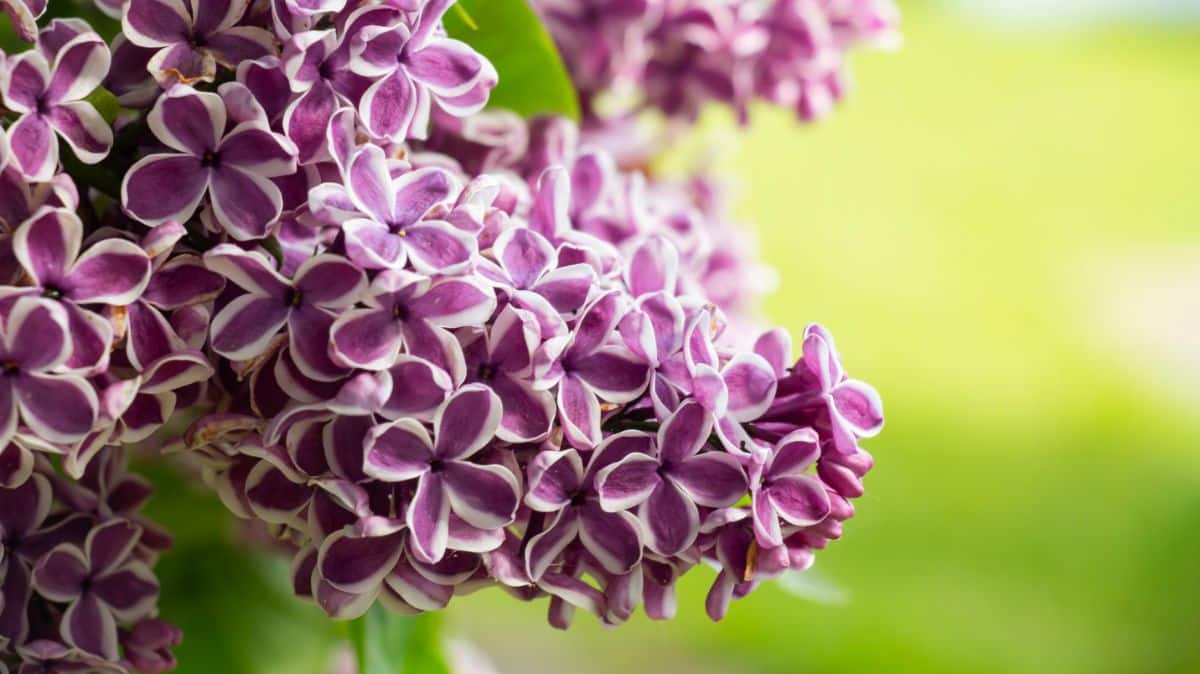
What should you plant with your lilacs?
● Bulb plants: Plants that grow from bulbs, such as alliums or daffodils, are favorite companions for lilacs.
● Sage: Like lilacs, sage plants appreciate plenty of sun and will be happy next to them.
● Dianthus: The fragrances of lilacs and dianthus flowers can blend together nicely, making them an excellent pairing.
Some additional ideas for lilac companion planting include baptisia, lamb’s ear, and catmint.
Lilac Landscaping Ideas
There are many ways you can make use of lilacs in your landscaping, such as:
● Borders: Lilacs can make wonderful border plants. Consider planting them at the edges of your lawn or lining a garden walkway with them.
● Privacy screen: The bigger types of lilacs can fill out a large area in your garden quickly, effectively blocking the view between yourself and your neighbors. They offer a wonderful way to increase the sense of seclusion in your garden.
● Cottage garden: Creating a cottage garden is all about designing a look of abundance, and the voluminous blooms and foliage of lilacs do this very well.
● Woodland garden: Lilacs do not want to be under the full shade of a woodland garden, but they can do nicely at its edges.
● Around a bench: Lilac blooms can beautifully frame a garden bench.
● Near your windows: If you enjoy the scent of lilacs, planting them near windows you can open during spring and summer is a great way to let that fresh fragrance into your home.
● Curb appeal: Looking for a quick and easy way to boost the curb appeal of your home? Even a single lilac shrub out front can do a lot to increase the visual appeal of your home and landscape.
Recommended Lilac Varieties
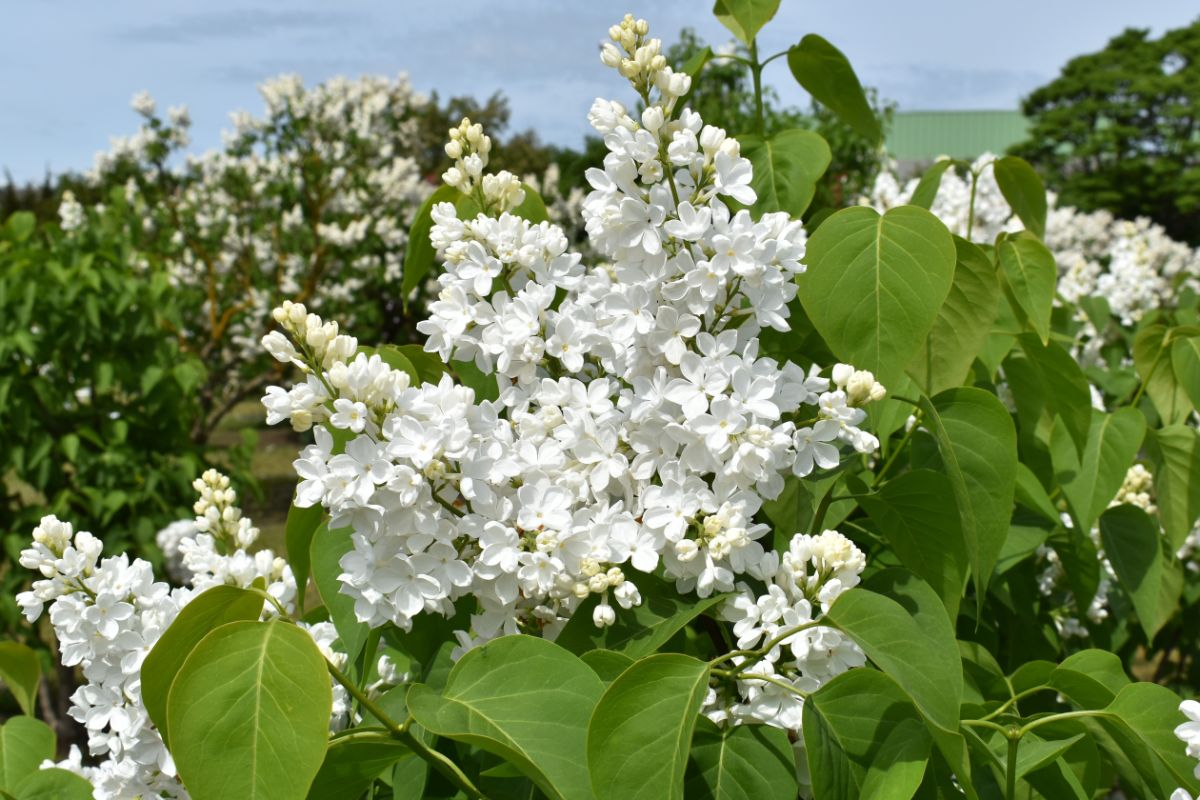
Here are a few examples of beautiful varieties of lilacs that can make a wonderful addition to your outdoor spaces:
● Bloomerang: Most lilacs flower once during spring and then quit until next year. But the Bloomerang series of hybrids bloom during spring and then again during fall. Multiple colors are available to choose from.
● Scent and Sensibility Pink: This compact lilac is another re-blooming option that will produce a second flush of blooms.
● Sensation: Here is a cultivar that will stop anyone in their tracks. The flower buds open to reveal astonishing dark purple blooms with white edges. The contrast in colors makes every single petal stand out for a well-defined look. You will also love the gorgeous fragrance of this cultivar.
● Tiny Dancer: If you want a lilac that maxes out at five feet tall, the compact “Tiny Dancer” is an outstanding choice. The blooms are light purple.
● Scentara Double Blue: Looking for double flowers that will take your breath away? This cultivar’s plentiful double blooms have a deep bluish-purplish hue.
● Palibin: Those looking for dwarf varieties of lilacs will want to check out this beauty, sometimes called the “Dwarf Korean Lilac.” Attractive foliage and small pink blooms are sure to charm you.
● Royalty: When this cultivar opens its light purple flowers late in the season, it will be as if the true king has returned to your garden.
● Rosie: We have shared some cultivars of lilacs with you that sport light pink blooms, but here is one you can choose if you want bright pink blossoms instead. You can also get away with growing it in a warmer climate zone than you can with most lilacs.
● Ludwig Spaeth: If you want deep purplish-reddish blooms on a lilac, then you can plant this spectacular cultivar. It is another late bloomer.
● Ivory Silk: If you want to grow a large lilac that features white blooms, then consider this elegant cultivar.
● Primrose: One of the hardest colors to come by for lilac flowers is yellow. But the “Primrose” cultivar will produce the sunny blooms you are seeking.
● Burgundy Queen: Just as you would guess, this plant features flowers that are a deep burgundy hue.
● Madame Lemoine: Need a cultivar of lilac that will produce reliable blooms every year? This is a great choice. Its white flowers should appear without fail so long as you are providing it with the right environment and care.
● Mrs. Harry Bickle: The buds of this cultivar are beautiful in and of themselves with their reddish hue. The blossoms they produce are light pink.
● Rochester: If, for whatever reason, you prefer a slow-growing lilac, then you may wish to plant this cultivar, which produces white flowers.
● Silver King: This cultivar is named for the silvery undersides of its whitish-bluish petals.
● Victor Lemoine: The light purple blooms of this lilac appear relatively late in the season, putting on a show after your other lilacs have faded. It also has a strong reputation among gardeners for its lovely scent.
● Yankee Doodle: For a really dark, vibrant, saturated shade of purple, plant the “Yankee Doodle” cultivar.
● Golden Eclipse: While “Primrose” is the best-known yellow cultivar of lilac, it is not the only one. Another option for pale golden blooms is this fantastic cultivar. Keep in mind that it can grow to be very tall, however.
You will discover dozens of other exciting cultivars as you shop for lilacs online and in your local garden centers.
Frequently Asked Questions About Growing Lilacs
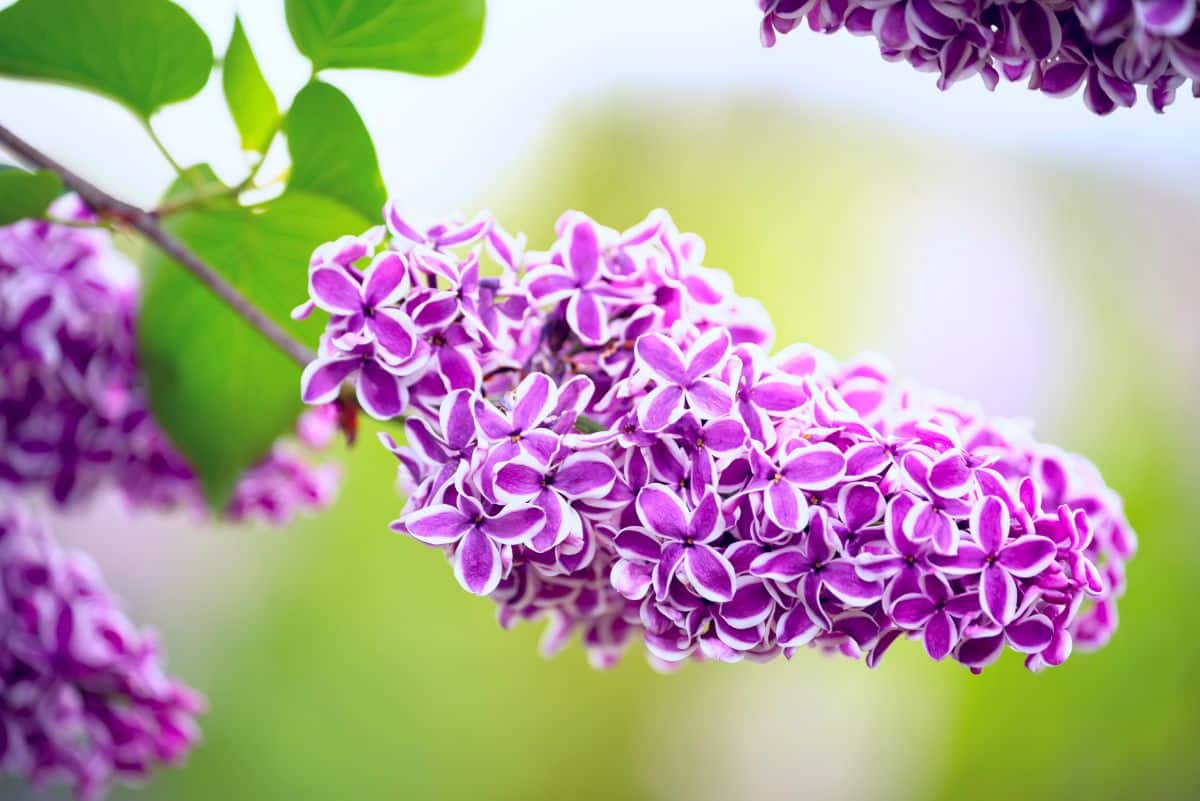
Let’s answer a few more questions you might have about lilacs.
If your lilacs are getting munched on, insects, slugs, or snails are the most likely offenders.
No, lilacs are not evergreen. They are deciduous plants.
At least, that is true if we are talking about the genus Syringa. There are other plants that also sometimes are referred to as “lilacs,” however. One example is the California lilac, which is the common name used to refer to plants in the genus Ceanothus. Those plants are evergreen.
Yes, lilacs have a beautiful fragrance. The scent can be described as soft, fresh, and “spring-timey,” sweet but not overly so. It is a light fragrance. So, you can plant them and look forward to their scent without worrying about it being overpowering.
Sometimes, you might find yourself in an unusual situation where your lilac is blooming but not during the expected season. What is going on here?
There are two possibilities. One is that you purchased a fall-blooming lilac (a re-blooming variety). If that is the case, your plant is fine. The other possibility is a stressed plant blooming when it shouldn’t.
Iowa State University Extension and Outreach writes, “This out-of-season bloom is usually triggered by stressful environmental conditions during the summer growing season such as heat, drought, severe defoliation from disease or pest, and/or heavy pruning.”
Thankfully, your lilac will be okay. But when it blooms again next spring, there may be fewer blossoms than you are used to. So, try and improve conditions if you can so fall blooming does not happen again the next year.
Did you recently plant the lilac? If so, do not be alarmed if your plant does not bloom right away. It could take you five or more years before you start seeing flowers.
If that is not what is going on, then there is probably something wrong with the conditions or care you are giving your lilacs.
One common culprit is not enough sunlight. Another is too much fertilization.
A common beginner mistake that can result in fewer spring flowers is pruning at the wrong time of year. If you trim your lilacs when you do your other perennials in the fall, you probably will get rid of the growth on which new blooms would have formed. See our section on pruning for more details.
No, lilacs in the Syringa genus do not appear to be toxic to cats or dogs. There is some confusion here, as it seems that some types of plants that go by the common name “lilac” are poisonous to pets. But as far as we can tell, they are in other genera.
Yes, you can eat lilacs. Almanac says, “Lilac flowers are edible, but flavor varies among cultivars from no flavor to “green” and lemony flavor … Consider making candied lilac flowerets for a special cake decoration: Separate the individual flowers. Using tweezers, dip each one into a beaten egg white, reconstituted egg white powder, or packaged egg whites. Then dip the flower in finely granulated sugar. Set it aside to dry before placing it on a cake.”
If you look around online, you can find other recipes in which you can use lilac.
A couple of famous poets have referred to lilacs in their work.
● Walt Whitman: ”When lilacs last in the dooryard bloom’d … I mourn’d, and yet shall mourn with ever-returning spring.”
● T.S. Eliot: “April is the cruelest month, breeding Lilacs out of the dead land, mixing Memory and desire, stirring Dull roots with spring rain.”
It seems like lilacs are commonly associated with loss but also juxtaposed with images of spring and renewal. Almanac also says that they are linked with the “joy of youth.”
Initially, yes, lilacs are fast-growing plants. As they get older, however, they grow more slowly. But you can still expect them to put on a foot or so each year until they reach their maximum size.
Yes. If you look at the base of your lilac plant, you will notice that it produces shoots. This is the means by which a lilac plant spreads. See the section on propagation to learn how you can split your lilacs to produce more plants.
Lilacs are perennial plants. While it can take a few years for a young plant to begin blooming, after it does, you can look forward to spring flowers and sweet fragrance every year.
Where to Buy Lilacs

If you are ready to bring the light, fresh scent of lilacs and the beauty of abundant blooms to your garden, then it is time to shop for lilacs. You will find the biggest selection of cultivars in a range of colors when you shop for lilacs online.


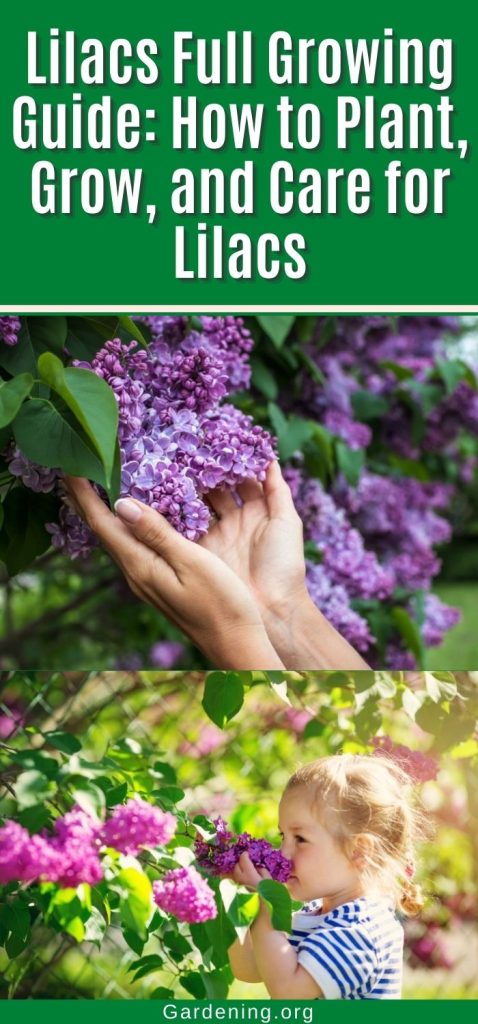
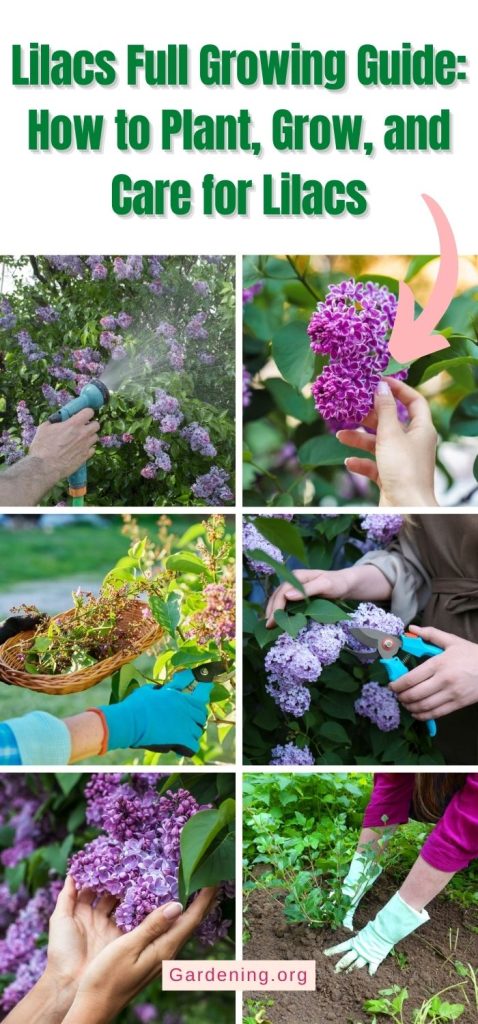

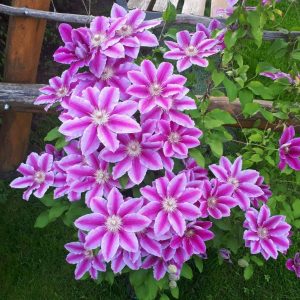
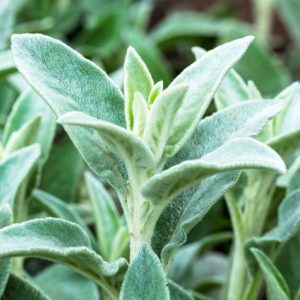


Mary Coakley
I so enjoy receiving.your emails.you.are a fount of information